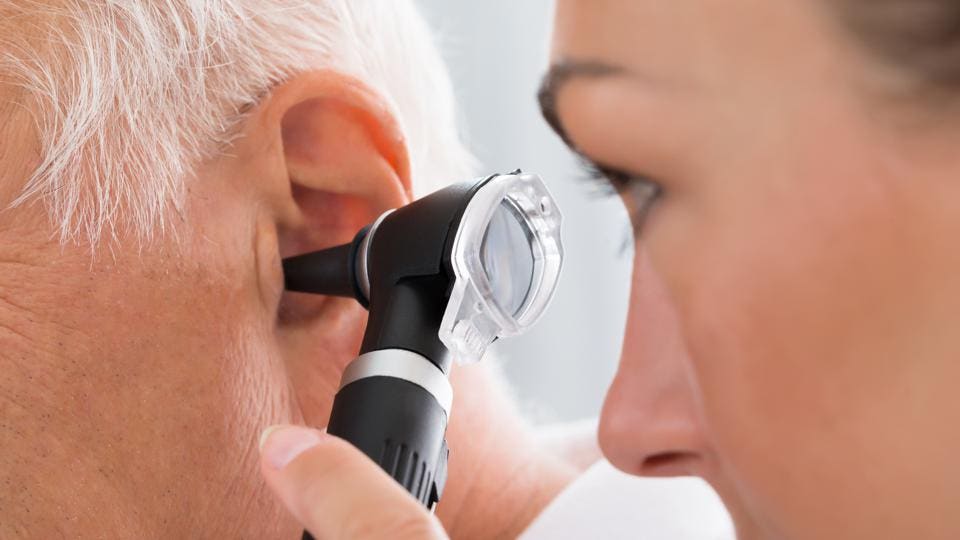Infection
Best Ways To Treat Ear Infections, According To Experts
If an ear infection persists longer than a few days, seek medical treatment. Depending on the type of ear infection and symptoms you present, home remedies may provide some relief, or a doctor may recommend medication.
Over-the-Counter Medications
Mild symptoms of ear infection pain can be relieved with over-the-counter pain medication such as acetaminophen or ibuprofen, and decongestants may be helpful to decrease ear fullness and pressure, says Karen Hoffmann, M.D., a board-certified otolaryngologist based in Atlanta.
Over-the-counter ear drops, however, aren’t recommended for ear infections, notes Dr. Angster, and are specifically meant to address ear wax build-up rather than to clear up infections. “They also contain rubbing alcohol, which can be painful if there’s an infection,” she adds. Additionally, over-the-counter ear drops can worsen an ear infection.
Antibiotics
Severe bacterial middle ear infections lasting more than two days may require treatment with antibiotics, according to guidelines from the Centers of Disease Control and Prevention (CDC).
Outer ear infection treatment usually involves cleaning out all of the ear wax and/or infectious drainage from the ear canal, followed by topical antibiotic or antifungal drops, says Nicole Aaronson, M.D., a board-certified otolaryngologist, attending surgeon at Nemours Children’s Health of Delaware and clinical associate professor of otolaryngology and pediatrics at Thomas Jefferson University Sidney Kimmel School of Medicine. If the ear canal is not first thoroughly cleaned, ear drops often have difficulty penetrating and destroying the infection.
Neomycin, a prescription antibiotic ear drop, is often used to treat bacterial infections of the outer ear. However, researchers estimate neomycin can cause allergic reactions in 7% to 13% of people, causing a rash when used topically. Ciprofloxacin otic ear drops are also used to treat ear infections in adults and children, says Dr. Aaronson.
Oral antibiotics, such as amoxicillin, may be prescribed as treatment as well. If prescribed medication for an ear infection, it’s important to follow instructions from your doctor, and take the entire course as prescribed. Not completing a course of medication may cause the ear infection to recur, and increases the possibility of developing a more antibiotic-resistant bacteria, which can be difficult to treat.
“If the ear infection is not responsive to amoxicillin, other stronger antibiotics can be used,” says Dr. Goudy. “Occasionally, there’s a need to use injectable antibiotics as a last resort.”
Home remedies
Research does not support home remedies as effective treatments for ear infections, but some might provide some pain relief, if approved by your health care provider.
Warm compresses can be comforting, says Dr. Angster. To make a warm compress at home, fill a sock with rice and microwave it for around 20 seconds, making sure it’s not too hot to touch, then hold the sock to the outside of the ear for a few minutes, Dr. Angster says. Keep the sock on the outside area of the ear only.
Oil drops at room temperature or heated between 97 and 99 degrees Fahrenheit (body temperature) won’t help get rid of an ear infection, but they may help prevent dryness, itching and help soften wax, Dr. Angster says. Using a dropper, drop one or two drops of mineral oil inside the affected ear and lie on that side for around three minutes, she advises. This is best used as a maintenance therapy in order to prevent future infections, but isn’t advised for use when there’s an active infection.
Hydrogen peroxide might also help to clear up infections in the outer ear, but Dr. Goudy advises speaking to a doctor before trying this method.
“If there is a hole in the eardrum and hydrogen peroxide gets into the ear through the hole, hearing loss can occur,” he says. Additionally, this treatment method can be painful if a hole is present in the eardrum.
Experts note hydrogen peroxide is best used as a way to manage excess ear wax. If one wishes to self-treat their ear wax in a non-infected setting, place two or three drops of hydrogen peroxide into the affected ear or ears, says Dr. Angster. However, if used, this method should not be repeated routinely. “It can be overly drying in the ear and make the ear itch. Also, if there’s wax or drainage present [in the outer ear], it [hydrogen peroxide] doesn’t get that out, it just bubbles in the ear canal and stays there,” he adds. Repetitive buildup of retained hydrogen peroxide in the ear canal can lead to an outer ear infection over time.
Drainage tube insertion
A myringotomy is a procedure in which a hole is placed in the eardrum. This is often used to drain fluid in the middle ear, and is sometimes followed up by placement of an ear tube through the myringotomy incision. The insertion of tubes helps improve air flow and drain fluid from the ear, while preventing fluid build-up of frequent ear infections or ear infections resistant to antibiotic therapy. The procedure is very common and can be performed quickly, says Dr. Angster. Depending on the type of ear tube used, tubes can stay in place for months to years if medically needed.
A myringotomy is offered if a patient has fluid behind the eardrum for more than three months following an ear infection that has not cleared on its own or after antibiotics are prescribed, she says.

